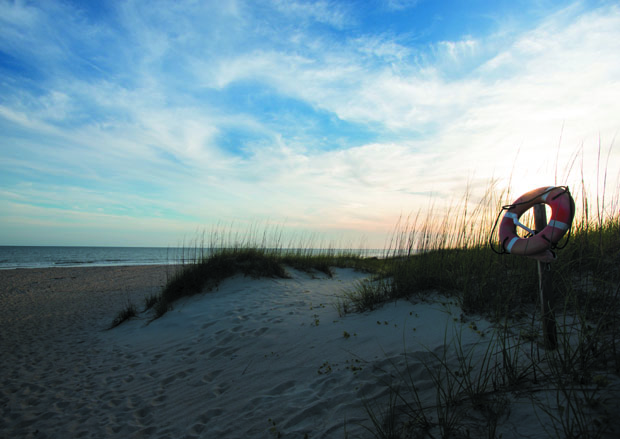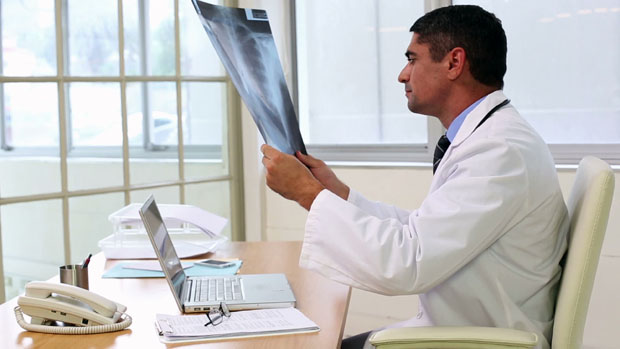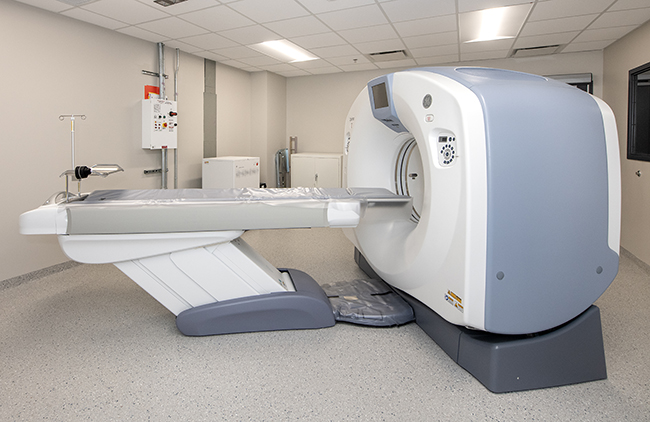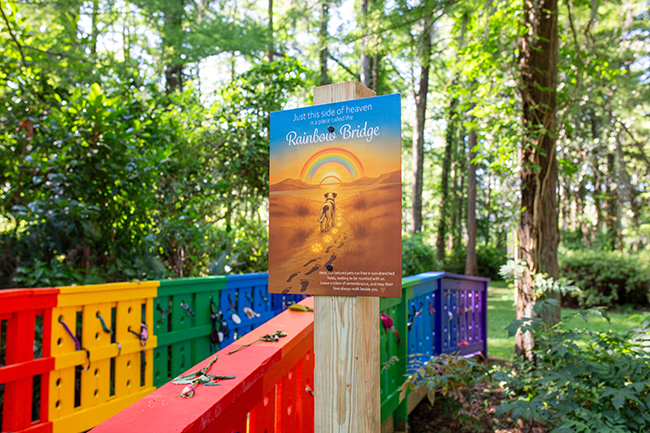Vacation Fitness Tips
12 Jul 2014
You’ll want to keep these great ideas handy as you plan your summertime getaways this season
By EDNA COX, RD, CSG, LD
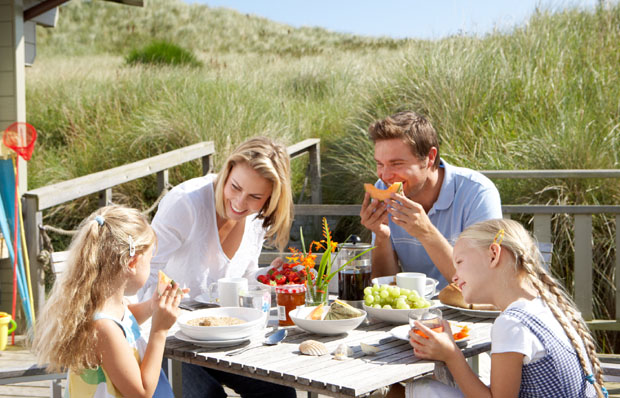
It’s summertime and the living is easy… and that means lots of outdoor activities, backyard BBQ’s, afternoons at the lake, and relaxing vacations. Sounds so healthy, that naturally we associate weight loss with these activities, not weight gain. However, many summer activities, cookouts, vacations and travel can work against our best efforts to eat healthy and stay fit. Your time away is meant to be a break from the daily routines, not a time to eat and drink with an abandon. So how do you find balance?
Whether you’re enjoying a staycation, road trip, or flying to an exotic resort, planning ahead can keep you on track with your healthy eating and fitness goals, and avoid that 5 - 10 pound weight gain that often accompanies summer vacation.
Know Your Options Use the internet to locate restaurants in your vacation spot that offer healthy menu options. If you have special dietary needs, such as diabetes or gluten intolerance, call the restaurant to inquire if they can accommodate your special requests.
Staying in a hotel? Check out the amenities. A microwave and fridge in the room can allow for some healthier options for breakfast, lunch and snacks. Find a local grocery store so you can stock up on healthy snacks and beverages to keep in your room. Most hotels have a fitness center and pool on the property or may offer guest privileges to a nearby gym. Some even offer zumba or yoga classes. Know what to expect so you can pack the appropriate workout attire and take advantage of these fitness options.
Many vacation spots have unique farmers markets. Take this opportunity to try some new and delicious regional foods that are healthy too.
Road Trip Driving to your vacation destination makes it easier to eat healthy if you plan ahead. Limit the junk foods, especially if you will be visiting a tourist attraction; sugary and fatty foods are likely to be abundant. There are plenty of healthy snacks that are easy to carry in the car.
» Portable snacks like bananas, grapes, berries, celery and carrot sticks are easy to store and handle in the car.
» Whole grain crackers, low fat popcorn, almonds and walnuts are great munchie snacks.
» Protein bars are good choices if they don’t contain too much sugar and provide several grams of fiber.
» Peanut butter and jelly sandwiches on multi-grain bread sliced in quarters are easy to handle and don’t easily spoil.
» Drink lots of water to keep hydrated. Products such as Crystal Light are convenient, add variety and are much better choices than sodas.
Be safe when you’re packing food to go. Avoid packing cans of carbonated beverages; if these become overheated they can explode. The night before you travel, freeze bottles of water. They help keep foods cold and fresh, and in just a couple of hours they’re ready to drink.
If you stop at a roadside picnic area or state park for lunch, keep all foods in the cooler until it’s time to eat. Mayonnaise-based foods, which are summertime favorites (such as potato salad and coleslaw), tend to spoil quickly. Plan to take along enough for only one meal, and not having any leftovers after a picnic. Discard any food that has been out of the cooler for an hour or more. Follow that old cliché, when in doubt, throw it out.
Flying There Airport food is horrid and airplane food is not the most delicious or nutritious. It’s a good idea to eat a healthy meal or snack before you fly, or bring a healthy sandwich or snack on the plane with you. Some healthy options include easy take on foods, such as fresh fruit, seeds and nuts, protein bars, whole grain crackers, salads, and wraps. Wraps may be easier to handle than other sandwiches and can be left unrefrigerated for a couple of hours. Skip the sodas and alcohol; both are dehydrating and contribute to jet lag. Reach for the water bottle and keep hydrated.
Breakfast This is the most important meal of the day even on vacation. How you start your day can set the attitude for your remaining food and fitness decisions. Skipping breakfast places you at risk for overindulging at other meals and snacks throughout the day. On the other hand, if you overindulge at the breakfast buffet or the carb laden continental breakfast, the rest of the day is likely to go downhill, especially when you’ve consumed 50-60% of your daily calories before noon!
At the continental breakfast, avoid the sugary, fat laden choices ― donuts, Danish and muffins. Instead, opt for the fresh fruit, yogurt and fiber rich cereals.
In-room dining offers several healthy choices like seasonal fruit and yogurt, oatmeal packets, fiber rich cereals and breads. Room service menus often include omelets and other egg dishes prepared with egg whites or heart healthy egg substitutes.
Snack Attack If you are staying at a hotel don't accept the key to the mini bar. The snacks are available in hefty portions at hefty prices. You’ll save lots of calories and cash. Instead, bring in some healthy snacks and beverages from a nearby grocery store or local farmers market.
When you are out enjoying the beach, a museum or any vacation activity, make sure you pack a snack. Fit a bag of almonds (100 calorie pack), an apple, or a protein bar in your pocket, back pack or purse. You’ll be glad you did when hunger strikes and food is nowhere in sight. If you planned for a healthy snack, you’ll be less likely to overeat at the next meal.
Dining Out If you find yourself parked at a fast food restaurant, you will save a little time and a little hassle, but can pile on the pounds without careful selections. Resist the appeal to supersize the order; instead choose the junior sandwiches, saving not only calories, but fat and sodium too. Select the entree salads with low fat or fat free dressings, sandwiches with grilled chicken or turkey, hold the sauces and mayo and drink water or calorie free beverages.
It’s the norm when traveling to eat most of your meals in restaurants. The following suggestions can help save you 100 – 800 or more calories per meal: order an appetizer as your entrée; skip the bread and butter; order dressings, sauces and gravies on the side; always use the salad plate when going through the buffet line; split an entrée with your partner; ask for a doggy bag and you’ve got lunch tomorrow; order only one dessert for the table – a bite or two will only add 50-100 calories.
Splurging You are on vacation and you want to try the local favorites. Every city has its own unique foods and treats that you don’t want to pass up: bagels in New York, wine in Napa, Lowcountry shrimp and grits and peach cobbler in South Carolina. Plan to eat healthy at two meals daily and then enjoy some specialty foods and beverages. It’s OK to enjoy some of these indulgences and explore regional culture. Find a restaurant that specializes in these local favorites and enjoy!
Watch the Alcohol Lounging poolside, sipping on Pina Coladas sounds relaxing until you realize that one of these frozen drinks may provide 800 calories and three have more calories than you need in a day. And you haven’t eaten a thing. It’s easy to sip an extra 2500 – 3000 calories a day without even noticing it; that’s until you are standing on the scales at home post vacation. Imbibing these extra calories daily translates to a five-pound weight gain at the end of the week.
Limit the high calorie, sugary drinks like margaritas, mojitos, and beer. A few lower calorie choices:
» Bloody Mary is only 200 calories
» Wine Spritzer is only 80 calories
» Seltzer spiked with fruit juice and a lime is 30 calories
Do Stuff Vacations should be a break from work and stress, but not a break from your healthy habits. Having a plan to include daily physical activity is key to maintaining your fitness level, and prevents carrying home the extra baggage around your waistline.
At the airport, take every opportunity to walk. Use the stairs versus the escalator. If you have a lengthy layover, fill up the time walking to the next concourse instead of taking the train. So plan to wear your walking shoes; they’re comfortable and you’ll save some space when packing.
Hotels, resorts, and cruises offer a variety of fitness options: the pool, workout centers, running tracks, fitness classes, even a personal trainer.
Plan physical activities for the entire family: biking, hiking, swimming, surfing or snorkeling. An hour of beach volleyball burns 150 calories. Playing golf? Skip the cart, walk the course and carry your clubs. You can burn 200 calories per hour. An hour of tennis can burn up to 400 calories, depending on the intensity.
Sneak in extra activity. Plan sightseeing ventures that involve walking versus riding in a bus or car. Shopping is not high intensity, but you can make it count! Walk fast in between browsing the shops and take the stairs whenever you have the choice. Walk to a nearby restaurant for dinner; the walk back is a pleasant end to top off a wonderful evening. Or after dinner go dancing. It’s fun and physical and may help you burn an extra 500+ calories.
Balancing the food, fun and fitness will help you feel reenergized and refreshed from your vacation and travel rather than feeling like you need another vacation to recover. Vacation memories are those you remember through the years and you should do everything in your power to experience them while staying fit.
Here’s to fun and fit summer travel and vacations.

